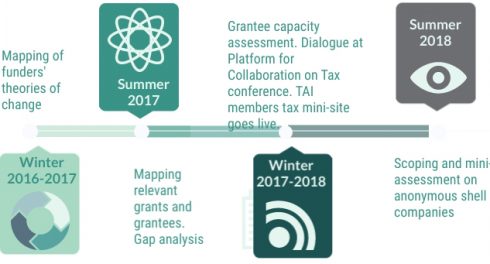Greater transparency of PPP deals can reassure citizens and investors alike

The flood of excitement around private investment supporting public provision of services shows no sign of receding in capital cities from Washington to Harare to Phnom Penh. Public-Private Partnership (PPP) models continue to proliferate, backed by multilateral development banks (MDBs) old and new: the Asian Infrastructure Investment Bank and BRICS’ New Development Bank have joined the list of champions. But the volume of PPPs in developing countries has stagnated since the global financial crisis, and they won’t deliver unless they are designed and implemented well. Making more and better public-private investments will take a far greater commitment to transparency from participants in the deals. Financiers—MDBs in particular—should take the lead.
PPPs have a mixed record: alongside successes, we’ve seen overpriced, under-utilized projects that have burdened the taxpayer at little or no benefit to the country. That’s in part because the deals are immensely complex to design—beyond physical infrastructure, they often involve contract terms around input prices, service prices and quality, regulation, land, and employment, for example. And because of the scale and complexity it is unsurprising that some of these projects involve more than the whiff of corruption.
Because transparency provides valuable information to investors, learning opportunities to government and assurance to citizens, it is widely accepted that principles for PPP development should enshrine transparency. The good news is that there are models that exist that we can learn from and that MDBs are well placed to champion.
A disclosure regime for PPPs
Ideally, all governments would adhere to proper infrastructure planning process that would mandate regular disclosures about PPP pipelines and individual projects. On that front the experiences of the Extractive Industries Transparency Initiative and the Construction Sector Transparency Initiativeoffer illustrations of how government and industry can agree on standards for information to be made public. And the World Bank has developed a Framework for Disclosure in Public-Private Partnerships that provides guidance on policy and practice in PPP disclosure. The framework suggests what should be disclosed and how and when it should be disclosed.
Amongst information that it suggests should be routinely disclosed:
- Financial information: financing structure, estimates, and actual revenues (limited by contract type), and forecast and actual equity return (limited by structure and contract type)
- Government support: guarantees, grants, land, rights, payments for service, and others
- Tariffs: tariff methodology and review and regulation
- Performance: actual performance against targets, actual penalties against contract provisions, independent engineer or auditor report, and user feedback and surveys
- Contract termination: termination provisions and handover provisions
- Renegotiations or changes: details of changes, impact of change on cost, fiscal commitments and contingent liabilities, risk allocation, tariff or payment, and services or levels of service
- Maintenance and provision of information: list of reports, documents, and other information the private provider should maintain and submit to authority, website and displays at site, timelines for submission and disclosure, and penalties for non-submission
While the list has limitations as Motoko Aizawa among others has detailed (not least inadequate coverage of information pertaining to non-financial risks), it is a helpful start. Project financiers could take a lead in pushing towards routine disclosure of this information. That’s not least because financiers have both the leverage to push for transparency and a self-interest in seeing it. They are at risk if unpublished provisions mandate politically toxic or financially unsustainable conditions on governments or the public, they have much to benefit if the number and sustainability of deals increases thanks to better design and greater public confidence.
A role for development finance institutions
And, amongst financiers—both MDBs and their private sector financing divisions—with their mandate to support broad-based development, should be leading efforts towards transparency (as the institutions themselves frequently suggest). That’s both for the benefits that would accrue to their client countries as well as the greater confidence it should provide to their own shareholders.
One model of a development finance institution (DFI) leading on standards for better private investment is the Equator Principles, spearheaded by the International Finance Corporation. These are a financial industry benchmark for determining, assessing and managing environmental and social risk in project finance. 92 Equator Principles Financial Institutions (EPFIs) in 37 countries have officially adopted the EP, covering over 70 percent of international Project Finance debt in emerging markets. Similarly, the IFC along with other DFIs could develop, implement, and promote routine disclosure Principles for PPPs—the Four P’s or P4s, perhaps.
As critics of EITI and other transparency initiatives point out, transparency alone does not assure good governance of projects. And the Equator Principles are voluntary, with compliance not always easy to gauge—there is no enforcement mechanism. MDBs and DFIs would need to work with civil society and governments to ensure PPP transparency is accompanied by greater accountability. But transparency is a first step—and it is past time for the development banks to practice what they preach on the issue.


